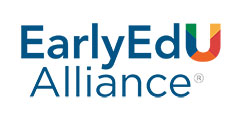California Transitional Kindergarten – Why Transitional Kindergarten?
California Transitional Kindergarten Case Study
Why Transitional Kindergarten?
State education policymakers have long advocated for expanding access to high-quality early childhood education, based on a growing volume of research indicating the importance of early brain development and social and emotional learning. Studies have shown the benefits of quality teacher-child interactions and higher levels of children’s school readiness3Bridget E. Hatfield, et al, “Thresholds in the Association Between Quality of Teacher–Child Interactions and Preschool Children’s School Readiness Skills,” Early Childhood Research Quarterly 36, (3rd Quarter 2016), 561–71.. We also know that the quality of classroom instruction is often related to positive child outcomes in language, reading, and math skills4Margaret Burchinal, et al, “Threshold Analysis of Association Between Child Care Quality and Child Outcomes for Low-Income Children in Pre-Kindergarten Programs,” Early Childhood Research Quarterly 25, no. 2, (2nd Quarter 2010), 166–76..
California’s experience with TK dates back more than a decade, and the role of the state in supporting early learning is considerably longer. But the state’s systems of early childhood education and care, as well as its vast K–12 apparatus, have been severely taxed by the COVID pandemic, which has drawn children and staff out of both systems. Proponents of universal TK support the expansion of early learning through California’s public schools as one way to reverse these trends while increasing access to early learning opportunities. In some ways, the timing of this step is propitious: California is experiencing sizable budget surpluses while Governor Newsom has expressed his commitment to serve as a champion of early childhood learning.
The TK expansion addresses long-term declining enrollment in California’s public schools—particularly those in urban districts—as a result not just of the COVID pandemic but because of out-migration of families from the expensive state, recently implemented immigration curbs, and declining birth rates of Latino families. California’s public-school districts vary in size from fewer than 100 children in small rural districts to more than 600,000 children in the Los Angeles Unified School District. The districts vary widely in wealth, administrative framework, and their local school boards’ political make-up and policies.
Of California’s 500,000 4-year-olds, the state Department of Finance estimates that about 20% are likely to attend private programs; some will also attend state pre-k or Head Start, so policymakers predict about 400,000 will attend publicly supported TK when the program is fully implemented. The 2021 budget law expanding TK allows children to become eligible for the program in 3-month increments until all 4-year-olds are eligible. (The 2021–22 school year was considered a “planning year” for the program.) The phased implementation will expand the program by more than 200,000 additional children by the 2025–26 school year. TK serves as the first year of a 2-year kindergarten experience for families who want to participate.
Some early learning advocates express concern that universal TK could uproot mixed systems of care for California’s young children and their families by focusing exclusively on public schools. Free TK in public schools will likely compete for children with private and nonprofit preschool systems, which include family-owned small childcares, center-based programs, state preschool, and Head Start. Early education advocates in the state are divided in their views of what this trend could mean for communities of providers that have long met childcare needs and for low-income children and their families.
The California Department of Education is committed to universal TK as part of an overall expansion of early learning throughout the state and a step toward a comprehensive model of preschool-grade 3 alignment. The state recently approved a P-3 teaching credential to encourage this policy. But as policymakers, advocates, schools, families, and other stakeholders move ahead with universal TK, they continue to grapple for answers to the question of what problem the program is supposed to address and whether universal TK is the best approach to solving it.
Citations
- 3. Bridget E. Hatfield, et al, “Thresholds in the Association Between Quality of Teacher–Child Interactions and Preschool Children’s School Readiness Skills,” Early Childhood Research Quarterly 36, (3rd Quarter 2016), 561–71.
- 4. Margaret Burchinal, et al, “Threshold Analysis of Association Between Child Care Quality and Child Outcomes for Low-Income Children in Pre-Kindergarten Programs,” Early Childhood Research Quarterly 25, no. 2, (2nd Quarter 2010), 166–76.

